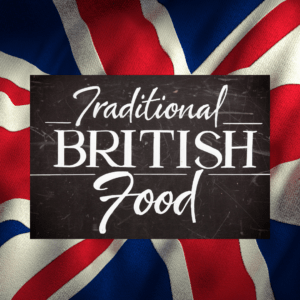 You’re about to embark on a captivating journey through British culinary heritage, where iconic dishes from the Neolithic era to modern times come alive. With an IPTV Subscription, you can explore a variety of cooking shows that bring these historical recipes to your screen, making it easier to recreate them in your own kitchen. You’ll uncover the fascinating stories and traditions that have shaped the nation’s palate, from the introduction of agriculture and the opulent banquets of the Tudor and Victorian eras to the diverse influences of Queen Elizabeth I and Queen Victoria. You’ll also explore the evolution of dining etiquette and the role of monarchs in shaping culinary preferences. As you dive into the ancient tools and cooking methods that laid the foundation for Britain’s rich culinary traditions, you’ll find yourself immersed in a world of flavor and history.
You’re about to embark on a captivating journey through British culinary heritage, where iconic dishes from the Neolithic era to modern times come alive. With an IPTV Subscription, you can explore a variety of cooking shows that bring these historical recipes to your screen, making it easier to recreate them in your own kitchen. You’ll uncover the fascinating stories and traditions that have shaped the nation’s palate, from the introduction of agriculture and the opulent banquets of the Tudor and Victorian eras to the diverse influences of Queen Elizabeth I and Queen Victoria. You’ll also explore the evolution of dining etiquette and the role of monarchs in shaping culinary preferences. As you dive into the ancient tools and cooking methods that laid the foundation for Britain’s rich culinary traditions, you’ll find yourself immersed in a world of flavor and history.
Neolithic Dietary Practices
With the dawn of the Neolithic period(4000-2200 BCE), Britain witnessed a profound transformation in dietary practices as ancient Britons transitioned from a nomadic hunter-gatherer lifestyle to settled agriculture. The domestication of cattle and sheep marked a significant milestone, providing a reliable source of meat, milk, and wool. Grains, such as wheat and barley, were introduced and cultivated, giving rise to the earliest known bread in Britain around 3500 BCE, albeit without leavening agents due to primitive baking techniques.
Neolithic dietary practices also included the consumption of beer, butter, and cheese, showcasing the beginnings of settled food production. These dietary changes not only diversified food sources but also fostered the establishment of permanent settlements, featuring thatch-roofed homes with wattle-and-daub walls. This shift towards stable living conditions supported the growth of agricultural practices and influenced social structures and community life. As you explore the iconic dishes of British heritage, it’s fascinating to trace the roots of these culinary traditions back to the Neolithic period, where the foundations of settled agriculture and diverse dietary practices were laid.
Royal Culinary Influences
From the opulent banquets of Tudor England to the rich, multicultural feasts of the Victorian era, royal culinary influenceshave played a pivotal role in shaping British heritage cuisine. As you explore the fascinating world of royal dining, you’ll discover how the preferences and policies of iconic monarchs like Queen Elizabeth Iand Queen Victoria left an indelible mark on the nation’s culinary landscape. Elizabeth I’s 200 food-related proclamations, which regulated prices and promoted fish consumption, reflect her keen understanding of the connection between food and the economy. Victoria’s love for heavy, rich dishes and her introduction of Indian cuisine to British tables showcased the expanding global influences on royal menus. The incorporation of international ingredients during Elizabeth I’s reign laid the foundation for the diverse flavors that would come to define British cuisine. As you delve into the eating habits of Elizabeth II, you’ll find a balance between traditional recipes and a focus on seasonal, locally-sourced foods. By recreating these iconic dishes, you’ll not only taste history but also gain a deeper appreciation for the enduring legacy of royal culinary influences.
Dining Etiquette Through the Ages
As you recreate iconic dishes from British heritage, don’t forget to consider the fascinating evolution of dining etiquettethroughout the ages. First, during the Elizabethan era, a strict hierarchy dictated seating arrangements, tableware, and the sharing of plates, with dessert reserved for top-tier guests. Historian Annie Gray notes that Queen Victoria’s rapid eating of six to ten courses in about 30 minutes often caused discomfort for slower diners. In the Victorian period, dining etiquette increasingly reflected gender divisions, with different expectations for men and women at the table. Queen Elizabeth II maintained traditional Victorian customs while embracing a balanced diet favoring seasonal foods. The evolution of royal dining customs, from the Elizabethan court’s elaborate presentations to the current royal family’s modern health consciousness, illustrates broader societal trends in British culinary practices. As you delve into the rich history of British cuisine, pay attention to the intricacies of dining etiquette that have shaped the experience of enjoying these iconic dishes through the centuries.
Monarchs Shaping Culinary Evolution
Throughout Britain’s storied culinary history, monarchs have played a pivotal role in shaping the nation’s ever-evolving food culture. As food historian Dr Annie Gray notes, Elizabeth I’s reign saw a surge in global ingredients and a push for fish consumption, evidenced by her numerous food-related proclamations. Queen Victoria’s fondness for hearty dishes and hasty meals left an indelible mark, with the introduction of Indian curries during her era. In contrast, Elizabeth II’s modern health-conscious preferences balanced tradition with seasonal foods, reflecting societal shifts. Historian Dr Annie Gray emphasizes that the evolution of royal dining customs, from strict hierarchies to relaxed etiquette, mirrors broader changes in British culinary practices. The unique choices and traditions of each monarch, meticulously documented in cookery books, have not only shaped royal menus but also significantly influenced public tastes and food culture. By examining the monarchs shaping culinary evolution, we gain a deeper understanding of how their personal preferences and societal contexts have contributed to the rich tapestry of British cuisine, leaving a lasting legacy that continues to inspire and captivate food enthusiasts today.
Ancient Tools and Cooking Methods
Britain’s culinary heritage stretches far beyond the influence of monarchs, with its roots firmly planted in the ancient tools and cooking methods of the Neolithic era. For the first time, settled homes featured central fire-pits, enabling communal cooking and heating, marking a significant shift from nomadic lifestyles. Cooking vessels crafted from fired pottery and tools made from flint, stone, bone, and antlers showcased early technological advancements in food preparation, allowing for the creation of more complex dishes.
These ancient tools and techniques revolutionized culinary practices, with high ceilings in Neolithic homes facilitating smoke dispersion from cooking fires, contributing to healthier living environments. The construction of monumental sites like Stonehenge during this period not only reflects societal shifts towards permanence but also suggests the importance of food preparation and communal feasting in early agricultural societies. As you delve into recreating iconic dishes from British heritage, it’s essential to appreciate the ingenuity and craftsmanship of these ancient tools and cooking methods, which laid the foundation for the diverse and rich culinary traditions we cherish today.
Frequently Asked Questions
What Is the Most Famous British Dish?
You’ll find iconic British dishes like fish and chips, shepherd’s pie, and roast beef with Yorkshire pudding. But for a truly indulgent treat, you can’t beat a warm, gooey sticky toffee pudding for dessert.
How Has History Influenced What England Eats?
From agricultural changes in the Neolithic era to cultural influences like the British Empire’s impact on curry, you’ll find England’s eating habits have evolved through historical events and regional variations in ingredients and dishes.
What Is the Cooking Show About History?
You’ll explore culinary traditions through historical ingredients and regional specialties, as expert chefs meticulously recreate iconic dishes using traditional cooking techniques. It’s a passionate journey that brings Britain’s rich heritage to life through food.
What Is the History of Recipe Writing?
You’ve witnessed the fascinating evolution of recipes, from ancient cookbooks to modern culinary traditions. Meticulous documentation of historical ingredients has preserved these treasured practices, allowing you to explore the rich tapestry of culinary heritage.

